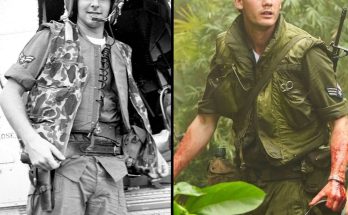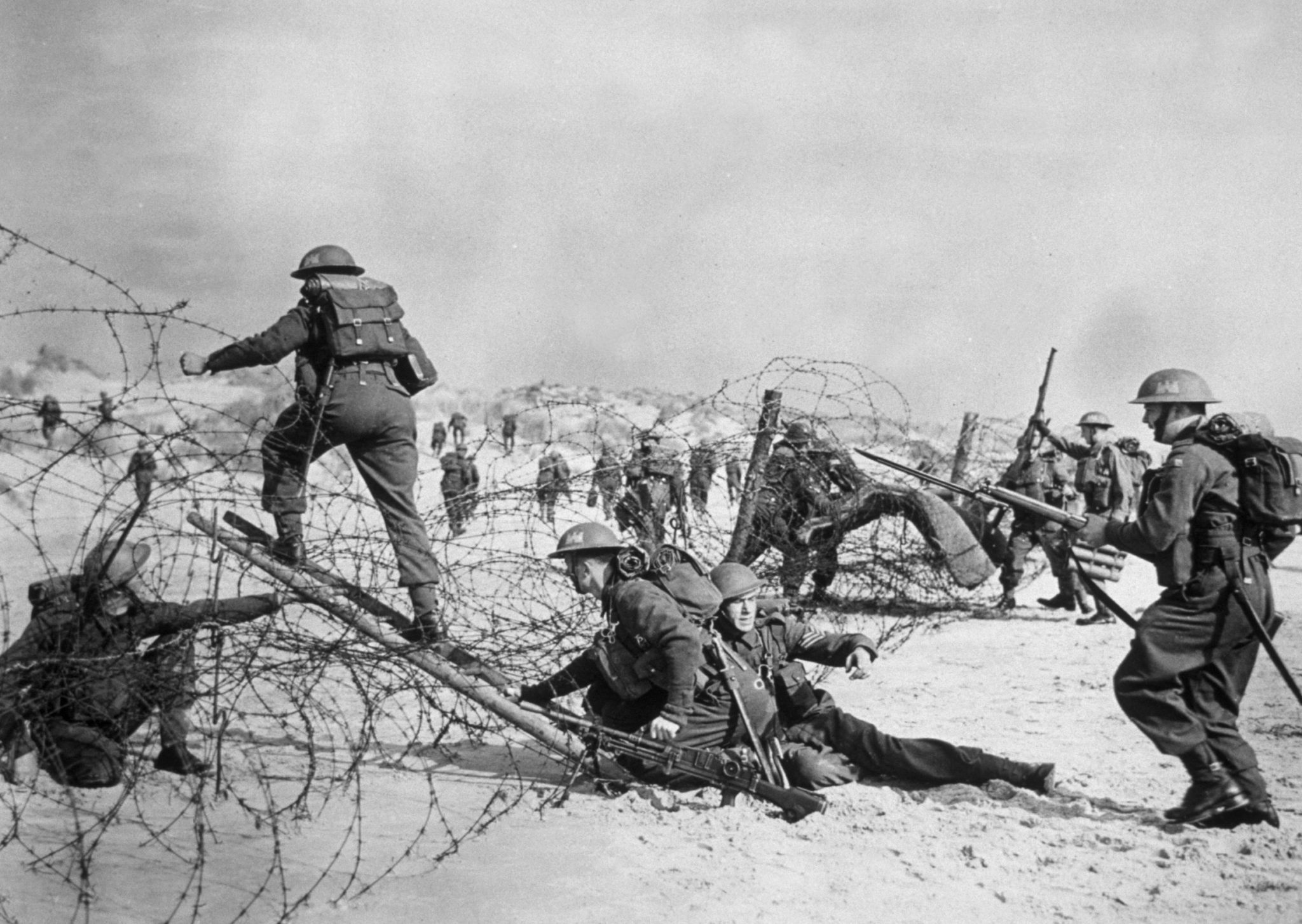
Since it was introduced only 1,358 Victoria Crosses have been awarded. One of these was to Stanley Hollis, a soldier in the British Army who had served from the opening days of the war. On D-Day he performed a number of heroic acts, becoming the only soldier to earn Britain’s most prestigious award on D-Day.
Hollis lived a varied life both before and after the war. The Victoria Cross (VC) recipient was decorated personally by King George VI.
Victoria Cross
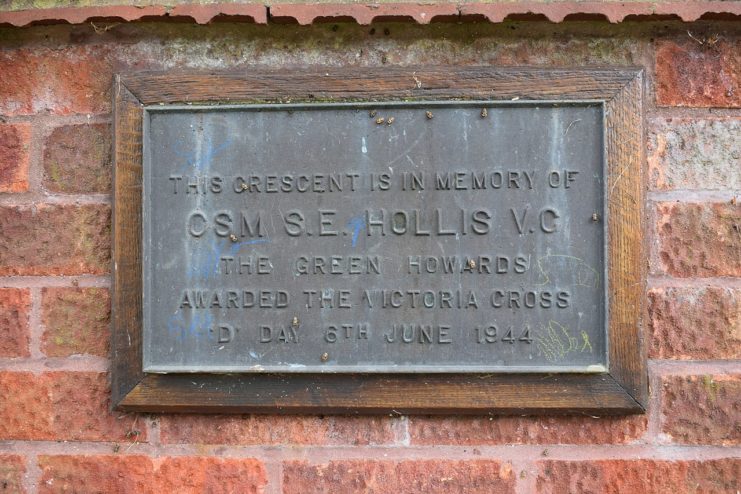
The memorial plaque commemorating the Victoria Cross was given to C.S.M Hollis and is located at no. 2 Hollis Crescent, Strensall. (Photo Credit: Holly1304 / Wikipedia / CC BY-SA 4.0)
The Victoria Cross was brought into use in 1856 by Queen Victoria to honor troops for extreme bravery and valor in the Crimean War. For a long time, it was believed that the material from which the medals are made was taken from old Russian cannons captured at the siege of Sevastopol. Recent investigations have cast doubt on this though, with the source likely being Chinese cannons instead.
As Britain’s highest award, the medal is unsurprisingly rare, and as such is worth a pretty penny. Some have gone for over $500,000 at auction. Just like the United States’ Medal of Honor, earning the Victoria Cross is an extraordinary achievement, although recipients are often burdened by the emotional weight of the medal.
Stanley Elton Hollis
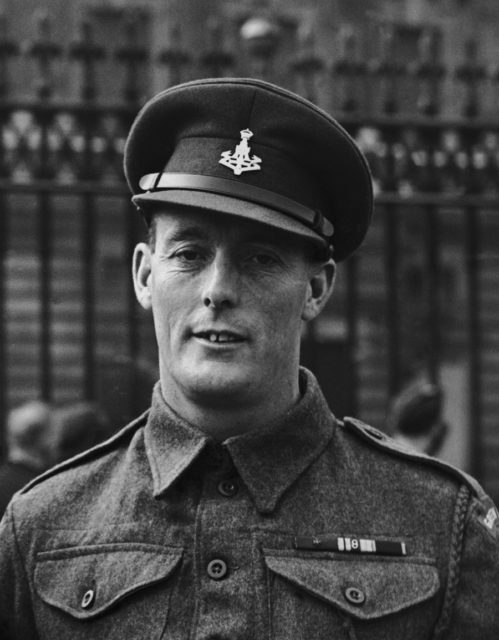
Company Sergeant Major Stanley Hollis of the Green Howards, winner of the first Victoria Cross awarded for bravery during the D-Day landings, pictured after receiving his medal at an investiture at Buckingham Palace, 10th October 1944. (Photo by Fred Morley/Fox Photos/Hulton Archive/Getty Images)
Hollis was born on September 21 1912 in Middlesbrough, North Yorkshire, England, remaining there until 1926. At this time the family moved to Robin Hood’s bay, and Hollis worked in a fish and chip shop.
Hollis joined the merchant navy in 1929 and started training to be a Navigation Officer, but his career was cut short the following year after a bout of blackwater fever, a dangerous malaria complication.
He returned to Britain and married Alice Clixby. He worked as a truck driver and the couple had two children. With these humble beginnings, it’s hard to imagine the chaos Hollis would soon go through.
WWII Service
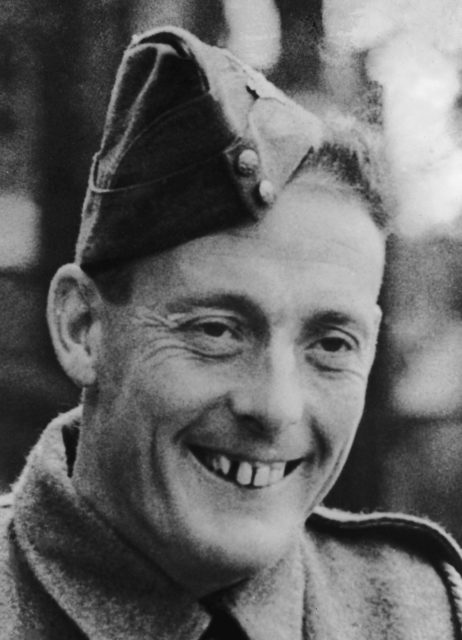
August 1944: Company Sergeant Major Stanley Hollis of the Green Howards, winner of the first Victoria Cross awarded for bravery during the D-Day landings. (Photo by Keystone/Hulton Archive/Getty Images)
Hollis joined the Territorial Army in 1939 and was soon mobilized with the British Army when WWII began. He was assigned to the 6th Battalion, Green Howards, which itself was part of the British Expeditionary Force (BEF). After the BEF’s disastrous experience in Europe, it ended up stuck on the shores of Dunkirk, France, awaiting evacuation. During the evacuation, Hollis was promoted to sergeant.
Hollis was one of the 340,000 who was successfully evacuated. After Dunkirk Hollis fought through the North African Campaign with the British Eighth Army, moving from El Alamein to Tunis.
In 1943, after being promoted to company sergeant major, Hollis participated in the invasion of Sicily.
By this point Hollis was one of the “old men” of the Green Howards, having fought through the most famous battles of the war so far. He was well respected, with the younger men looking towards him in times of stress. With his experience, Hollis would know what to do.
By June 1944 Hollis was 31 years old and about to take on his greatest challenge yet: D-Day. He was one of the most experienced men in his unit, so he was put in command of three machine guns and three mortar teams that were to cover the company as it moved off the beach.
Heroic Actions
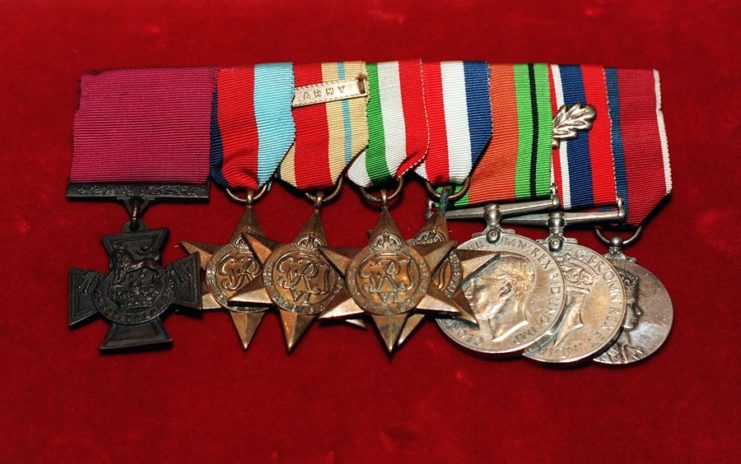
Medals (including a Victoria Cross, left) won by Company Sergeant Major Stanley Hollis on D-Day. To be displayed at the Royal Green Jackets regimental museum in Richmond, North Yorkshire. See PA Story DEFENCE VC. Photo by David Cheskin/PA. (Photo by David Cheskin – PA Images/PA Images via Getty Images)
After making his way off the beach, Hollis came across two German bunkers that had not yet been cleared. He sprinted 30 meters to the first pillbox, firing his Sten gun through its slit. Then he dropped a hand grenade into the pillbox, running in shortly after it exploded and capturing a number of prisoners. Hollis turned his attention to the second pillbox and charged it alone, capturing another 26 defenders.
By 11 am Hollis was involved in yet another attack against an enemy field gun protected by a number of MG 42s. He grabbed a PIAT anti-tank weapon and headed towards the field gun with two machine gunners. This maneuverer failed to destroy the gun, which then turned and fired over their heads. Realizing this plan was not going to work, Hollis screamed to the two men to retreat, and headed back to a nearby farm building.
When he reached safety he discovered the gunners did not follow him. Hollis said “I took them in. I will try to get them out,” and headed back in.
He picked up a Bren gun and charged into the open, firing his machinegun from the hip. This gave the two gunners a brief window to escape. Miraculously Hollis wasn’t killed during this daring stunt.
For these actions, he was awarded the Victoria Cross, the only VC awarded on D-Day.
A few months after D-Day Hollis was injured and sent back to England. He was decorated by King George VI in October.
After the war he resumed a rather ordinary life, working in a steelworks and running a pub (which is now named the ‘The Green Howard’).
Hollis passed away on February 8 1972 and was buried in Acklam Cemetery in Middlesborough.



